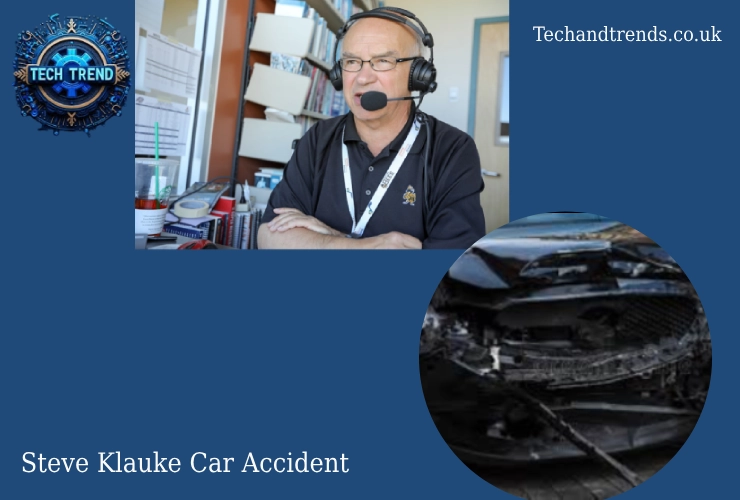In recent news, the racing community was shaken by the unfortunate Steve Klauke accident, involving a prominent figure known for his contributions to the motorsports world. This article delves into the details surrounding the incident, the emergency surgery he underwent, and his subsequent care in the Intensive Care Unit (ICU). As updates emerge, it’s essential to reflect on the impact of such incidents and the strength of community support that follows..
Overview of the Incident
The Steve Klauke accident occurred during a high-stakes racing event, where he was involved in a serious collision. Details of the accident reveal that Klauke was participating in a key race when a sudden and unforeseen event led to a crash. Eyewitness accounts describe the scene as chaotic, with emergency responders arriving swiftly to provide assistance.
Background on Steve Klauke
Steve Klauke is well-known in the racing community, having spent years as a commentator and a figure in motorsport management. His passion for racing and dedication to the sport have earned him respect among fans and peers alike. Klauke’s role in the motorsport industry has been pivotal, contributing not only as a commentator but also as an advocate for safety and the growth of the sport.
Details of the Steve Klauke Accident
The specifics of the Steve Klauke accident highlight the dangers inherent in motorsports. Reports indicate that a multi-car pileup involved Klauke’s vehicle, causing significant damage and injury.The impact was severe enough to necessitate immediate medical attention. Emergency services quickly retrieved Klauke from the wreckage and transported him to a nearby hospital for urgent care.
Timeline of Events
- Collision: The accident occurred during a pivotal moment in the race, with Klauke’s vehicle colliding with another car at high speed.
- Emergency Response: Paramedics arrived within minutes, assessing the situation and preparing for extraction.
- Transport to Hospital: Klauke was airlifted to a trauma center due to the critical nature of his injuries.
- Emergency Surgery: Upon arrival, a surgical team evaluated Klauke and determined that immediate surgery was necessary to address his injuries.
Emergency Surgery
Nature of Injuries
The nature of Klauke’s injuries was serious, involving multiple fractures and internal injuries that required immediate surgical intervention. The medical team acted swiftly to stabilize his condition before proceeding with surgery.
Surgical Procedure
The emergency surgery involved several critical steps:
- Assessment: Upon arrival at the hospital, the surgical team conducted a thorough assessment using imaging technology to identify the extent of Klauke’s injuries.
- Surgical Intervention: Surgeons performed a series of procedures aimed at repairing fractures and addressing internal injuries. This included stabilizing broken bones and repairing any damage to internal organs.
- Post-Operative Care: After surgery, Klauke was monitored closely in the recovery room before being transferred to the ICU for further observation.
Surgical Outcomes
The outcome of the surgery was cautiously optimistic. Surgeons successfully addressed the critical issues, and Klauke was in stable condition following the procedure. However, the road ahead was fraught with challenges as he faced a long recovery process.
ICU Care
Intensive Monitoring
Following the surgery, Klauke was placed in the ICU, where he received round-the-clock care from a dedicated team of healthcare professionals. The ICU setting is critical for patients recovering from serious injuries, allowing for constant monitoring of vital signs and ongoing assessment of their recovery.
Challenges in Recovery
Recovery in the ICU is often fraught with challenges, especially following significant trauma:
- Pain Management: Klauke faced considerable pain post-surgery, necessitating a comprehensive pain management plan that included medications and alternative therapies.
- Infection Risk: As with any major surgery, there was a heightened risk of infection, requiring vigilant monitoring and preventive measures.
- Physical Therapy: Early intervention with physical therapy is crucial, even in the ICU, to maintain muscle strength and promote recovery.
Psychological Support
Klauke’s medical team recognized the importance of psychological support during recovery. Access to counseling and mental health resources became an integral part of his care plan, helping him cope with the trauma of the accident and the challenges of recovery.
| Read More Informative Articles |
|---|
| Chris Tomlin Net Worth |
| YoungstaCPT Net Worth |
| Jamal Mixon Net Worth |
| Adhir Kalyan Net Worth |
| Andy Fickman Net Worth |
Support from the Community
In the wake of the accident, the racing community rallied around Klauke, offering support through messages, fundraisers, and visits. His colleagues and fans expressed their concern and hope for a swift recovery, highlighting the strong bonds within the motorsports community.
Fundraising Efforts
Organizers initiated various fundraising efforts to assist with medical expenses and support Klauke’s recovery.. These initiatives reflect the solidarity of the racing community, showcasing how individuals come together in times of crisis. Events such as charity races and donation drives not only generated financial support but also raised awareness about safety in motorsports.
Social Media Support
Social media played a significant role in keeping fans updated on Klauke’s condition. Supporters created hashtags to share messages of encouragement, and many racing teams dedicated their races to him, emphasizing the unity and compassion within the sport. The outpouring of love and support was a testament to Klauke’s impact on the racing community.
The Road to Recovery
Progress Updates
As Klauke’s condition stabilized, updates regarding his recovery began to emerge. His medical team reported gradual improvements, with Klauke showing resilience and determination. The path to recovery is often long, but his positive attitude played a significant role in his healing process.
Rehabilitation Phase
Once Klauke was stable enough to leave the ICU, he transitioned to a rehabilitation program designed to facilitate his recovery. This phase included:
- Physical Rehabilitation: Tailored exercises aimed at regaining strength and mobility. Therapy sessions focused on gradually increasing activity levels, helping Klauke regain his physical capabilities.
- Occupational Therapy: Focus on daily activities to help Klauke return to his normal life and responsibilities. Occupational therapists worked with him to develop strategies to adapt to any limitations he might face.
- Emotional Support: Addressing the psychological impact of the accident through counseling and support groups. Engaging with others who have faced similar challenges provided Klauke with motivation and hope.
Milestones in Recovery
Throughout the recovery process, Klauke achieved several significant milestones, such as:
- First Steps: The moment he took his first steps post-surgery was celebrated not just by him but by his medical team and supporters.
- Returning to Work: As his health improved, Klauke expressed a desire to return to the motorsport community, emphasizing his commitment to advocacy for safety and recovery awareness.
Conclusion
The Steve Klauke accident serves as a poignant reminder of the risks associated with motorsports. However, it also highlights the strength of community support and the resilience of the human spirit. As Klauke continues his journey towards recovery, the racing community remains hopeful for his return to the sport he loves. His story is one of courage, determination, and the unyielding bond shared among those in the motorsports world.
Through this experience, Klauke not only showcases the importance of safety in racing but also the power of community and support in overcoming adversity. His journey is far from over, but with each passing day, he moves closer to recovery, embodying the spirit of a true champion.


Comments are closed.